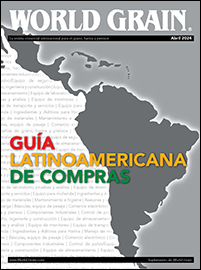India’s weather in the past year has been so far out of line with what most people assume is normal that it has raised serious concerns about climate change and worry over the coming 2015 monsoon season.
The anomalous weather pattern began just a little less than one year ago when El Niño-like conditions were prevailing around the world and the monsoon was scheduled to begin around June 1. The Northern Hemisphere spring season was already plagued by delayed seasonal rainfall in Southeast Asia and much talk about an impending full blown traditional El Niño event that was to be more serious than that of the infamous 1998 event.
The predictions of calamity actually looked like they were going to come true for a while when monsoonal rainfall failed to begin in India June 1. The rains were not only late, but virtually failed in the first six weeks of the monsoon season that normally runs from June 1 through Sept. 30. Conditions shortly after that changed dramatically and rain suddenly began in late July and continued frequently and beneficially through the end of the summer monsoon. Actually, the heavier-than-usual rainfall continued through September and into October, setting some near-record rainfall totals after the end of monsoon officially ended.
India’s weather turned seasonably dry in November and stayed that way through January. Some timely rainfall came along in February to support winter crop reproduction, but it was a little lighter and more erratic than usual. Then along came March and India’s world turned upside.
India is normally dry during the March through May period. It is traditionally the hottest and driest time of the year and it fits well with the end of reproduction for many crops including wheat, rapeseed, sorghum, lentils, millet, winter groundnuts and some rice and other pulse crops. The normally hot, dry finish to the growing season expedites crop maturation and harvesting.
However, this year India’s weather turned wetter than usual, and in a five-week period beginning in the first week of March the nation received copious amounts of rain. Totals in most of the north ranged from 2 to more than 5 inches. Central portions of the nation received 0.60 to nearly 4 inches, and the far south and extreme east also reported well above average amounts of rain. These totals may not seem very significant to other Northern and Southern Hemisphere crop areas, but India normally gets 0.25 to 0.75 inches of moisture during the same five-week period in a normal year. The normal amount of moisture is never enough to counter evaporation, and moisture is never an issue for maturing grain, oilseeds or other crops.
This year’s incredible amounts of rainfall hurt the quality of many crops and delayed the start of harvesting. Some of the rain fell in association with strong to severe thunderstorms producing large hail and damaging wind, and some flooding resulted. Many crop fields were flattened by the wind, rain and hail, and losses mounted during the period.
‘Modoki’ El Niño
Much of the adverse weather was attributed to a non-traditional El Niño event, referred to as a “Modoki” El Niño. Modoki is Japanese for “similar, but different.” Modoki events are similar to traditional El Niño events, but instead of anomalously warm equatorial Pacific Ocean water temperatures occurring between the International Dateline and the coast of South America, they occur over the central equatorial Pacific Ocean straddling the International Dateline. Moving the center of warmest ocean water to that region causes the Philippines and immediate neighboring areas to turn drier than usual while India tends to be wetter biased. Many El Niño events that occur in the Northern Hemisphere winter season tend to enhance rainfall in India during the winter. But this “Modoki” event produced a more extreme amount of anomalous rainfall, causing damage to winter crops.
“Modoki” El Nino is still in place today, and that has many forecasters concerned about the summer monsoon this year. Some forecasters have suggested that the impact of El Niño induced dryness in India – which often occurs in the monsoon season – might be more severe than usual. World Weather, Inc. does not believe that will be the case, but much of their opinion will depend on ocean temperatures in the Arabian Sea and Bay of Bengal.
Traditional El Niño events will reduce summer rainfall from India. Some years the reduction in rainfall can be far more severe than in other years and recent research suggests that much of the determination over the impact of monsoonal rainfall intensity, with or without El Niño, is associated with ocean temperatures.
Recent ocean temperatures in the Indian Ocean, Arabian Sea and Bay of Bengal have trended warmer than usual, and if that trend holds true for another month or so the El Niño event should evolve favorably, depending on the intensity of El Niño conditions. There is evidence that the “Modoki” El Niño will evolve in a more traditional El Niño event. But when that occurs, the El Niño will be a mature event.
Most of the damaging weather conditions that occur to agriculture in India because of El Niño occurs when the event is developing and not when it is fully mature. Moving from “Modoki” El Niño conditions to more traditional El Niño will not produce the same impact that India would experience if El Niño was evolving from normal ocean conditions.
Statistics have shown that traditional El Niño events that evolve out of “Modoki” conditions are usually weak and less disruptive to weather around the world than in more typical El Niño evolutions.
In the case of India, there have been 13 possible “Modoki” El Niño events since 1950. The reason for using the word “possible” is that there are some disputes among meteorologists and climatologists as to how “Modoki” should be defined. Out of those 13 years of Modoki events, there was only one year (1966) that was a drought year in India. Most other years produced some minor anomalies of both above and below average rainfall, but no extreme conditions. In addition, 1966 saw El Niño conditions abate in April and May, making the comparison to this year unlikely and further discounting that year as an analog for this year.
The 1966 “Modoki” event, by the way, is one of the disputed years. Some forecasters do not believe it qualifies as a “Modoki” event while others say it does. Six of the 13 “Modoki” events since 1950 are disputed among scientists, and if all of those questionable events are tossed out of the sample, we are left with seven “Modoki” events and no drought years.
Because of the statistics associated with “Modoki” and years in which “Modoki” translates into a traditional El Niño event show no association with drought, World Weather, Inc. believes summer rainfall in India will be relatively close to normal. Rainfall may be 95% of normal nationwide this year and there is potential that the rainy season will be a little better than that.
If World Weather, Inc. is correct with the prediction, India should have a successful summer production year. Cotton is expected perform best, but most of the soybean, groundnut, corn, rice and sugarcane will likely experience favorable conditions. An updated forecast will be issued at the end of May and the final determination about this year’s monsoon will be heavily influenced by ocean temperatures in the Arabian Sea, Indian Ocean and Bay of Bengal. The warmer ocean water becomes, the greater rainfall is likely to be.
Concern about Southeast Asia rainfall will also continue for a while over the next few weeks. The Philippines will likely continue struggling for normal rainfall because of the “Modoki” event, and there may be a few areas in Vietnam, eastern Malaysia and eastern Indonesia that may also have some tendency for dryness into the early summer.
However, sufficient amounts of timely rain are expected to support favorable production. Philippine dryness may be more significant and production of rice, sugarcane, coffee, cocoa, palm oil, rubber, tea, coconut and a number of herbs and spices may be impacted. The most significant dryness may last for the next six to eight weeks and then conditions will begin to improve.





